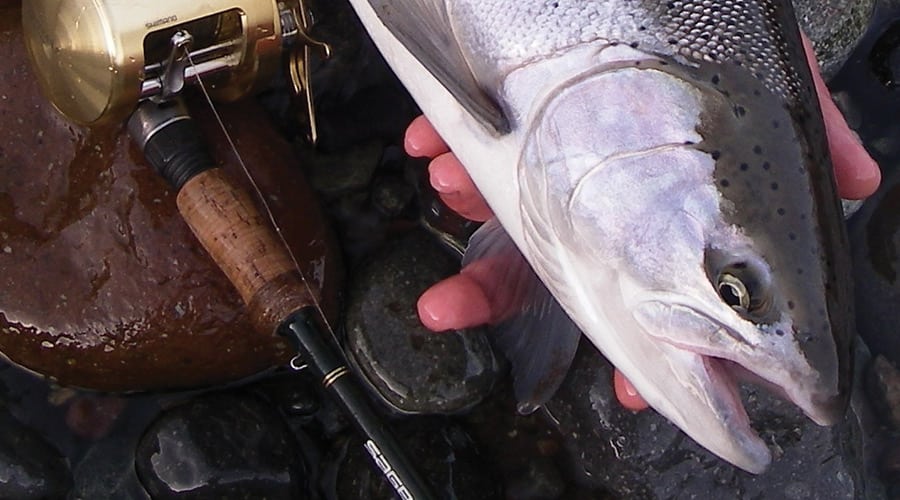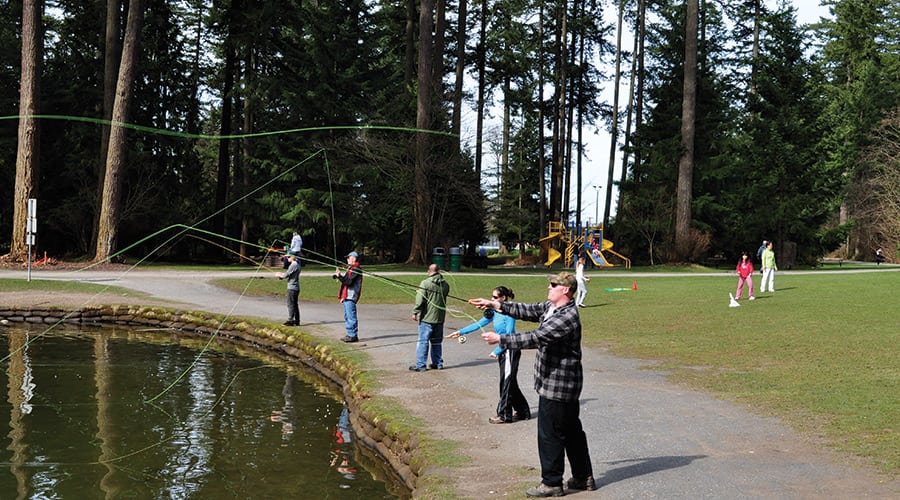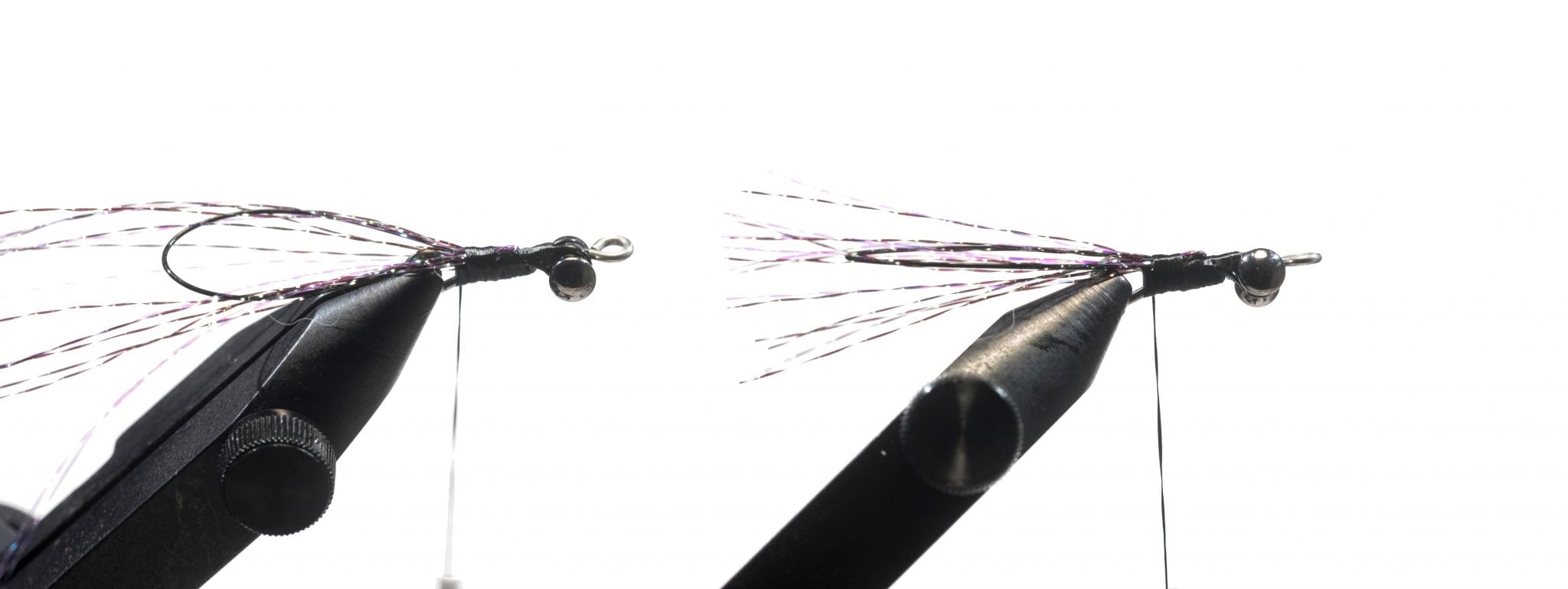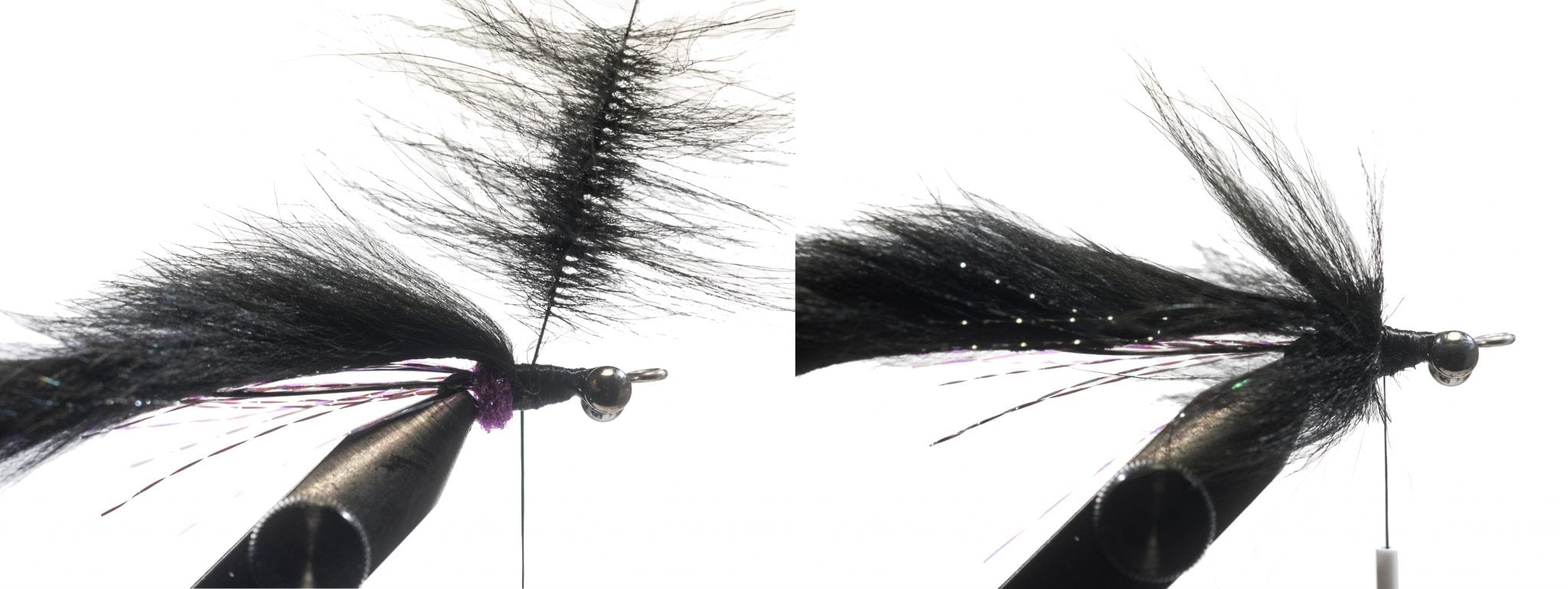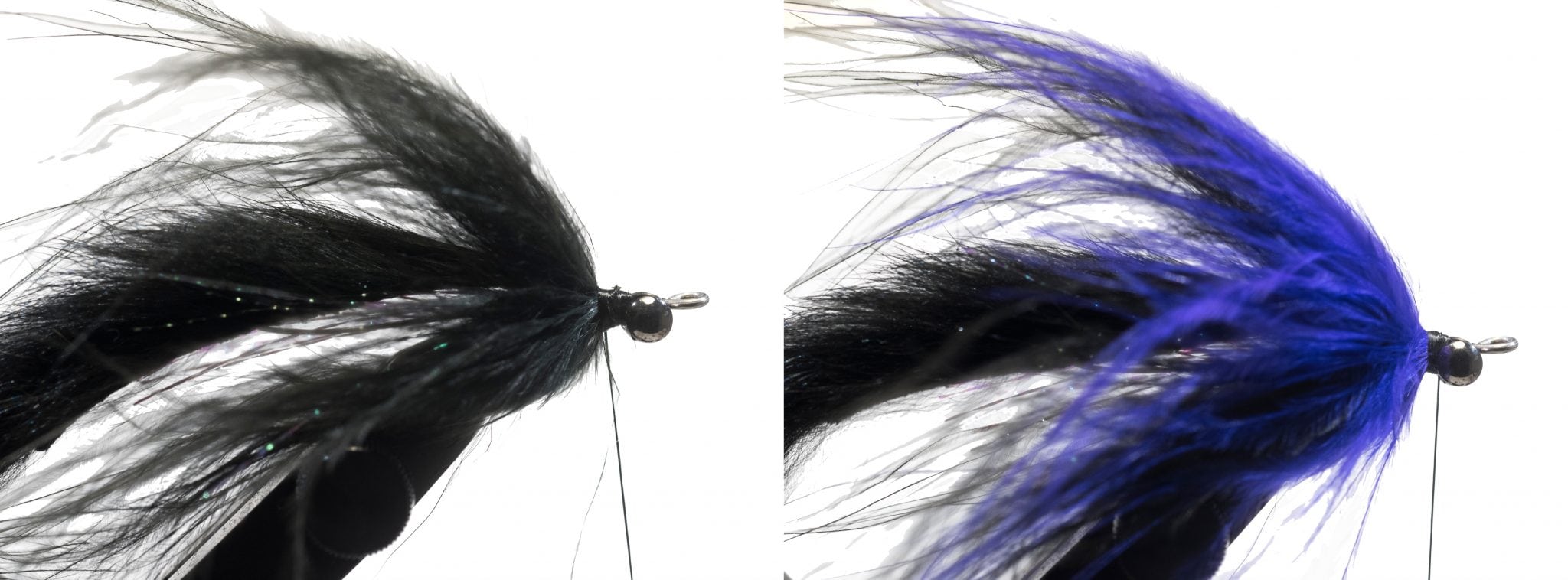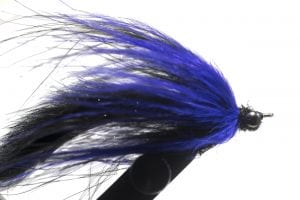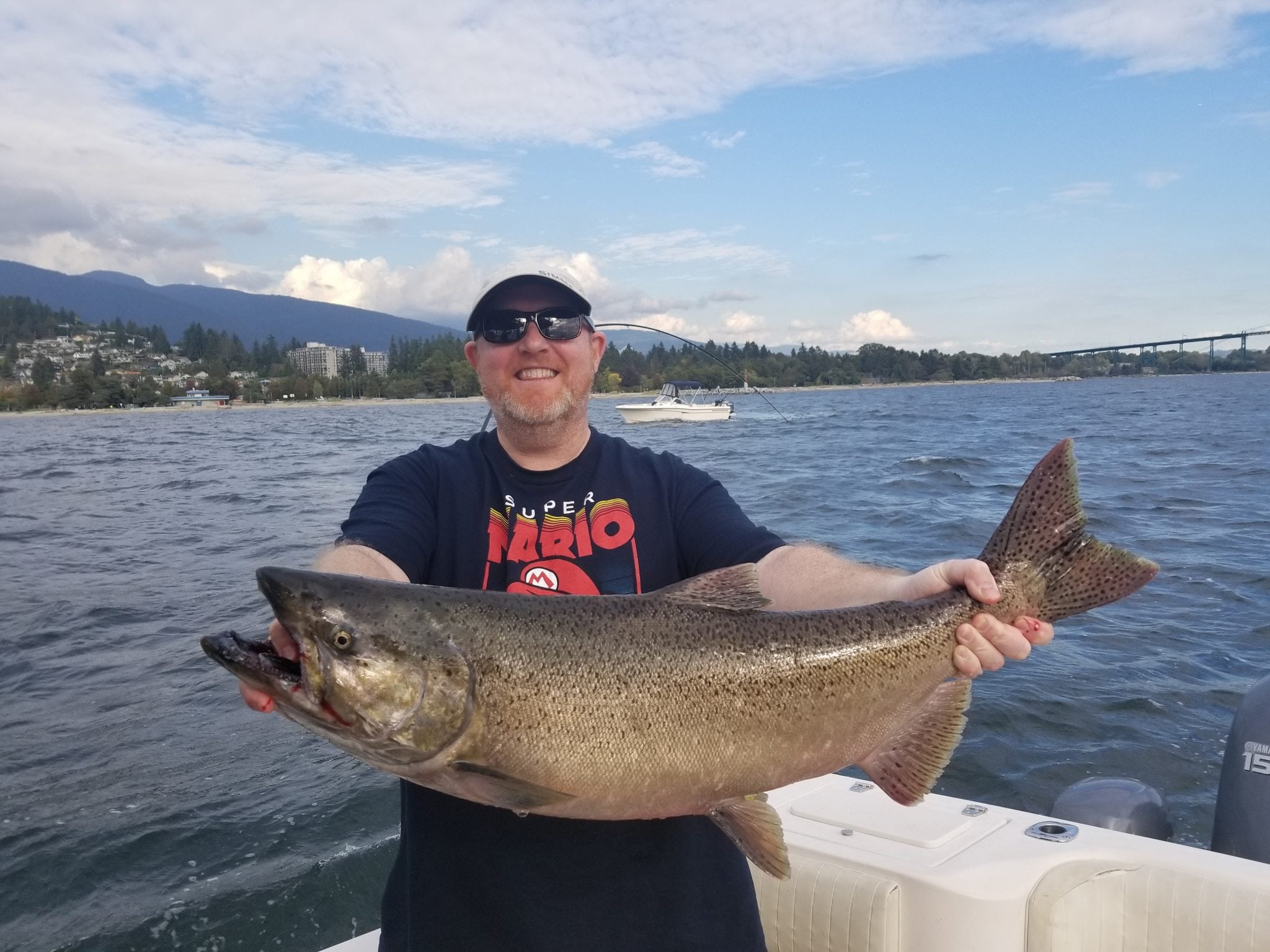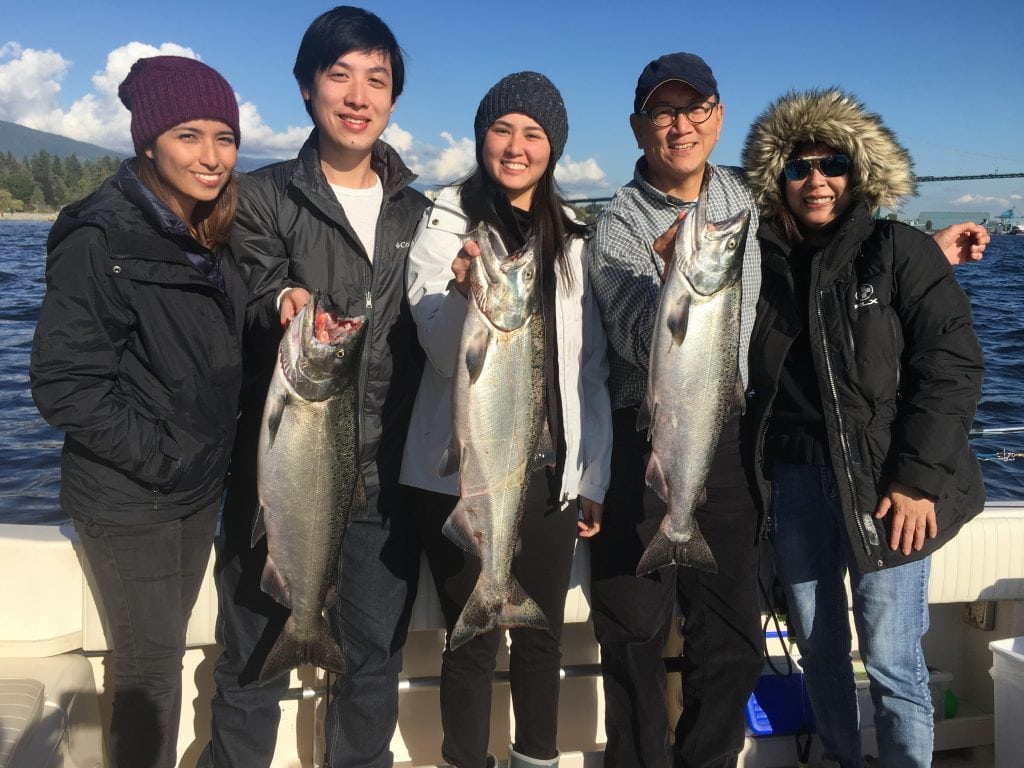OUTLOOK
We have heard some great salmon reports from across the river fishing scene this week and with another big bump of rain coming today, it looks perfect for river salmon fishing this weekend. Things will clear up tomorrow with great weather next week. We have details on the Vedder, Squamish, Stave and Capilano Rivers in the river section below.
As of writing this report today saltwater sockeye fishing is still open and on longer trips we’ve been successful and got a few in the boat down at Sandheads. A little closer to home for those of us heading out of downtown fishing at the Cap mouth is in full swing! Check out Jason’s Report for all the details and his tips on this great fishery!
We have been revamping the fly tying section and we have some exciting plans in that department that you should see over the next few months. This week we have another feature fly from Zach. Check out his Bunny Pop. It’s a great steelhead and main stem chum and coho pattern. Check it out below and stay tuned for more flies.
The Skagit is a topic of conversation this week as well. We have confirmed that they will not be opening the park for the rest of this season. The fire is out but the park staff are concerned about falling trees and general safety concerns in the burned areas. We are sad that we will not get to fish there this year but are interested to watch how the fire affects the ecosystem around the river and we are excited for next season.
Ok, on to the report!
CLASSES AND COURSES
We were busy with first round of fall classes this week and have wrapped up or Introductory courses for the month. Join us in October for another great round of classes. Sign up early as these sell out every year!
Fall Salmon River Fishing: Floats, Spinners + Spoons
This 3hr evening seminar covers float fishing, spinner fishing and spoon fishing; the three most productive techniques to catch BC salmon in a river.
Seminar: October 2, 2018
Seminar Time: 6:30pm – 9:30pm
Cost: $45.00+GST
Introduction To Fly Fishing
This course was specifically designed to give the new fly fisher the basic knowledge, casting skills and fly fishing strategies to effectively fish our local BC waters. This course is comprised of two sessions; 3hr evening seminar and a 3hr casting session.
Seminar: October 17, 2018
Seminar Time: 6:30pm – 9:30pm
Casting: October 20, 2018
Casting Time(s): 10am – 1pm or 2pm -5pm
Cost: $125.00+GST
Fly Fishing For Salmon In Rivers
Fly fishing for salmon is one of the most exciting fisheries in the Lower Mainland. Let us teach you the techniques and the hot spots to catch salmon on the fly in our local rivers. In the 3hr evening seminar you will learn about rod, reel and line, sink tip, and fly selection. Then put the skills into practice during a fully guided day on the water where you will learn how to read water and swing the fly!
Dates:
Seminar: Oct 24, 2018
Guided: Oct 27 or 28, 2018
Guided: Nov 3 or 4, 2018
*Custom Trip Dates Available*
Seminar Only Cost: $45.00+GST
Seminar & Guided Walk’n Wade Cost: $250.00+GST per angler, minimum of 2 anglers per guided day on the water.
Seminar Time: 6:30pm – 9:30pm
FRESHWATER FISHING REPORTS
Vedder/Chilliwack River Fishing Report
The water levels have dropped back down on the Chilliwack although with the rain coming over the next few days it should be a great start to the week. As I write this report I am cautiously optimistic. The fish are still trickling in every day although it did seem a tad slow from what I saw and from what most anglers have told me, barring a couple of lucky anglers that stumbled onto big schools. To put it into perspective only two out of the ten or so guys on the run I was fishing earlier in the week hooked up, including myself. Not to say that this is necessarily a good representation of what you should expect but it is still spotty so do not start your day with high expectations and you might get handsomely rewarded. That said – you don’t know unless you try.
While some people like to rely on reports before going, nothing beats getting out there yourself and putting in a few hours on the water. Chinook and Coho are throughout the system now. We definitely aren’t anywhere near peak run numbers but if you put in the footwork I can pretty much guarantee you will be fishing over some fish at this point.
Taking the water conditions as they are now (low and gin clear), I highly suggest sticking to the lower river and downsizing your presentations once the sun comes out. I’ve been getting bites on metal, but a lot of anglers are getting bit on small globs of pro-cured roe and small sparse flash flies. The bluebird skies were somewhat brutal for fishing anytime past 9am but that should change with the incoming storm. Keep an eye on the water levels and make sure your gear is ready to go. The salmon season on the Vedder is just about to shift into second gear!
Alex Au-Yeung
Squamish River Fishing Report
The Squamish is starting to turn that glacial green as nighttime temperatures begin to drop. That said, the level was still a bit high and wasn’t easily fishable in some key areas this past week. Those anglers who put in the legwork and time have been able to find some fishable areas. Spoons, spinners, flies, and jigs have all produced some early coho and char. Once temperatures consistently stay cool, the river and it’s tributaries should be fishable throughout.
As far as salmon go, a few anglers who put in time were rewarded with coho. Side channels and tributaries were the main areas of focus, and both flies and gear produced. Whether or not you use fly rods or conventional gear, having a variety of different options can be important. Different sizes and colours can sometimes be the deciding factor, especially if fish are showing themselves but aren’t cooperating. Chartreuse, pink, purple and black combinations are all worth having in the kit.
Be safe, and tight lines
Jordan Simpson
Stave River Report – A Beginners Guide
The Stave is an interesting spot to fish. It is a very short system below the dam but it offers a wide variety of water to fish. Not in the sense that there is lots of spots to fish but in a sense of variety. There are deep holes, more classic runs and then some more slough like water closer to where it hits the Fraser. The other factor that you will face on the stave is that because it is relatively easy to access it can get crowded.
To fish it effectively you have to understand how to fish in the different kinds of holding water and then how to manage fishing around other people.
The good news is there is a strong run of chum and coho and is it a great spot to learn to salmon fishing not to mention that at the mouth you can even sturgeon fish with a high level of success!
Let’s quickly look at how to fish the different water types for salmon –
In the runs where the water is 2-8 feet deep with a walking speed current, float fishing with jigs is the go to method for chum. It is a ton of fun and a great way to master basic float fishing techniques and does a relatively good job of not snagging fish. A 9-11 foot medium heavy baitcasting rod is ideal but a longer strong spinning rod will get you in the game. We use a float, lead and a jig. We recommend short floating so you do not snag fish. This means keeping the jig at least 2-4 feet off the bottom. If you see your float bouncing on the bottom reel up and adjust it about 2 feet (come into the shop we will show you have to set it up). One trick that can dramatically increase your hookup ratio is to tip your jig with a quarter size chunk of prawn meet. You can pick them up at the grocery store and if you really want to geek out you can dye them but the basic uncolored ones work great. Go to colors for your jigs and/or bait if you are colouring it, is purple, pink, and chartreuse.
For coho in this water, fish bait or colorado blades but you will have more success targeting coho in the slow water. Spinners and spoons are great for the slower deep water. A slow constant retrieve is what you are going for. Colours to have in your kit are blue, green and copper.
Another thing we have found very effective for the coho and chum in this slow water is twitching jigs. Colors in purple, chartreuse, black, pink and even olive have been very productive in season past.
When you go out, look to find these two different types of water and have gear in you kit to cover both.
Good Luck out there!
Capilano River Fishing Report
There was some great fishing in the river with the heavy rain over the week. They opened the dam on both Saturday and Sunday. This triggered the fish to move and most of the fish holding at the mouth headed up the river. As soon as the word hit the street, a lot of people went and had pretty good success.
Now the water is low again, and fishing has slowed but they could open the dam with the rain today and tomorrow. In situations when the dam is not open it is best to downsize your profile (leader, size of lure/flies, etc). Right now drifting isn’t the best option as there isn’t enough current with the low water. Casting small spinners and or fly fishing is good when the water is low. With the rain this weekend, they might release the water again and we will be back to float fishing. Keep an eye on the Cap-cam and if the water goes up take you drift gear out and drift colorado blades, mini Gs or artificial bait. Remember there is bait ban in the system and fishing with any bait or scent is not permitted. You can also swing spoons, spinners or twitch jigs to find active fish. For fly guys use full sinking lines and sparse but flashy flies. Come in the shop and check Andre’s coho flies out.
Remember to release all steelhead and any wild coho in the system.
Dustin Oh
Skagit River/Fire Update
The Skagit is closed for the season. If you skipped the outlook above be sure to give it a read for more details.
PACIFIC ANGLER FLY TYING FEATURE
The Bunny Pop
Two weeks ago I teased a new fly that I have been playing around with. This pattern is fantastic for fishing early in the season when the water is high and coloured. It is very versatile and this base can be used to create a wide variety of Salmon and Steelhead flies in the “Intruder” style. I call it the Bunny Pop because it incorporates one of my favourite materials, zonker strip, and it also has a collar similar to what you would find on a popsicle fly. The techniques used in this pattern will help you learn to build Intruders in a very simplified format. Let’s get going on the Bunny Pop…
First we will start by putting a 20mm Fish Skull Articulation Shank in the vice and we will close up the return bend at the back with some 140 or 210 denier black thread. Once we have some solid wraps in place we will take the thread back up to just before the eye and we will make 2 small thread bumps for the medium Brass Eyes to sit in. Do a good amount of cross wraps to secure the eyes to the top of the shank and then take a few wraps around the eyes on top of the shank but below the eyes to lock all those wraps in place.
After you secure in the eyes take your thread to the back of the shank and tie in a 6” piece of Intruder Wire. I like to make the loop a little bigger than the hook that I will be placing on the wire, for this fly a size 2 Owner SSW works great, this makes it easy to swap out hooks if they should bend or break or if I want a bigger or smaller hook. Secure the wire up to behind the eyes. I then like to take one piece of the wire and wrap it underneath the eyes on one side and give it a few snug wraps to hold the wire in place. I will then do the same with the other piece of wire. This really helps to secure the eyes in place and to stop them from spinning. Secure the wire almost to the back of the shank and trim the wire with wire cutters.
Take a few snug wraps over the cut ends of the wire, be careful not to cut your thread on these sharp ends, and finish with your thread at the back of the shank. Next we will grab 4-5 strands each of Black and Purple Krystal Flash. Tie in the strands on one side of the shank extending past the wire loop and secure them towards the shank eye. Then pull the extra krystal flash back and secure it on the other side of the shank. Trim the krystal flash so that it extends a bit past the wire loop.
Now we will make a bit of a hot spot at the back of the fly. You can use any colour that you like but to keep with the colour theme I used UV Purple Ice Dub. Make a thin dubbing noodle and make a dubbing ball at the back of the shank that is about the size of a pea. If you build up the dubbing slowly with a thin dubbing noodle, your dubbing ball will be tight and wont have many loose strands coming off the ball. This tight dubbing ball helps to make a good prop for our shoulder.
Time to add in our tail. I find that a 2 to 2-1/4” Black Zonker strip fits this pattern perfectly. I like to strip off about a 1/4” of the fur off the rabbit strip to reduce bulk at the tie in point.
Once your zonker is tied in make a dubbing loop with your thread and make sure the loop is anchored at the front of the zonker strip. For the shoulder of this style of fly I love to use Arctic Fox. Fox keeps its shape really well in the water and easily props up materials to create that tear drop shape that we love to see in the water. We just got a bunch of amazing Fox tail pieces in the shop from Skeena River Fly Supply in a variety of colours. After combing out the under fur and pulling out some of the longer guard hairs, slide the fox into your loop and have the tips extend just shy of the wire loop. I like to space the fox out in the loop so it covers about 1” of space in the loop. Give your dubbing spinner 6-10 turns to help hold the material in place and trim the butt ends close.
With the fox butts trimmed to length, pinch your loop closed and give your dubbing spinner a good counter clockwise spin. With your fox all spun up, I like to take a velcro strip and tease out any trapped fibres. Wet your fingers with a bit of water and stroke the fox towards the back of the fly. With all of your fox pointing backwards, start wrapping the fox around the shank in tight touching wraps. Your 1” of material should give you about 3-4 wraps around the shank. Tie off your dubbing loop when all the material is on the shank and give a few tight turns so that your thread has been wrapped back a few turns on the fox. This squeezes the fox against the dubbing ball and helps to prop it up.
Now we will create the collar. First tie in a piece of Black Marabou by the tip and wrap the marabou 3-4 times around the shank. Secure the piece of marabou with your thread and wrap slightly back on it like we did with the fox. Next we will tie in a piece of Purple Marabou by the tip. The amount of marabou wraps is really up to you, I like 3-5 depending on the quality of the feather, not too much and not too little. I don’t like to hide all the materials that I put in underneath. Again, secure the marabou in place and take a couple wraps back on it. With this flies black base you won’t notice too much of the detail underneath, but with other colour combinations you will have to make the call as you go.
To finish this fly off we could do a couple of different things. You could tie in a piece of chenille if you wish, wrapping it in front of the marabou and criss crossing around the eyes before finishing in front of the eye. Or, as I do here, I take some Black UV Ice Dub and I create a thin dubbing noodle on my thread. I take a couple wraps in front of the marabou and then I criss cross around the eyes and in front to make a nice neat head. Whip finish 2-3 times and slide a hook onto the wire loop and you’re ready to go. Make sure that your rabbit strip sits nicely inside of the hook bend. If it is too long it will foul on the hook so just give it a little trim.
As I said at the beginning this fly lends itself well to a variety of species. It has an excellent tear drop profile that we look for in our streamers. For some reason fish love this look and are always willing to munch on it. Tie this one up in a variety of colour combinations and I am positive that it will bring you success. Personally, I find this pattern makes an awesome sculpin imitation. If you have any questions don’t hesitate to come into the shop and I’ll be more than happy to help you tie this or any fly up!
Zach Copland
SALTWATER FISHING REPORTS
Vancouver Saltwater Salmon Fishing Report
Well it looks like they aren’t going to shut down sockeye, or at least I haven’t seen any emails as of today. It’s late in the season and there are still some around, lots of jumpers down at South Arm, but there aren’t too many fresh fish left to show up. Eddie was down there on a longer trip on Wednesday and did well for sockeye and then headed to the Cap for chinook, so that is a good game plan if you have the weather and the right tides.
The Cap Mouth chinook fishery is now in full swing and Lars, Eddie, Khoi, and Philippe all had some great catches there mid week on our 5-8 hour charters. Green and chartreuse blade glow flashers and green or chartreuse glow teaser heads with an anchovy or herring, fished close to the bottom, are producing well. This is a crowded fishery so don’t try and come down towards the green marker with the flood tide on your stern and take that inside lane. Stay wide on the way down, on the outside of the pack of boats, make your turn to port at the green marker, then troll into the flood current. If everyone fishes this way it creates a nice and organized oval circuit. Don’t be that guy trying to take the inside lane in both directions. General rule is starboard rod to the beach gets the right of way. Also keep an eye out for the cruise ships and the freighters. You will see the Port Authority out there making sure you aren’t past the green marker or out in the shipping lane. When you see the commercial vessels approaching troll further up towards Ambleside until they pass. If we don’t start doing this there is the potential for this area to be closed. I have been in meetings with the Port. They don’t want this fishery to close, they understand how unique it is, but they also have to make sure we are safe as are the commercial vessels, so lets help them out by proactive in out boat positioning while the freighters and cruise ships are approaching.
Captain Eddie’s guests enjoyed some success on their Cap Mouth trips this week!
A reminder that the limit is currently 1 chinook a day at the Cap. Remember to keep the heads of your hatchery fish (missing adipose fin) and return them to us at the shop (78 East Broadway, Vancouver) or a Head Depot near you. This is very important as this data will go a long ways in showing the success of the hatchery and net pen programs so we can go back to a 2 fish a day limit for chinook. These fish, by the time we get them at the Cap Mouth, are not orca food. They are stacked up at the Cap Mouth and provide a sport fishery and the hatchery managers want us to harvest these fish. They don’t use these fish for brood, they get the brood from the Chilliwack/Vedder.
Despite the Capilano River coming up significantly with recent rains, there are still catchable numbers of coho off Stanley Park. I am not sure how much longer this will last, but if you get your springs off the Cap it can be worth checking this area out. They are starting to get lockjaw, but we have been able to get a few to the boat in recent trips.
See you in the shop or on the water,
Jason Tonelli


